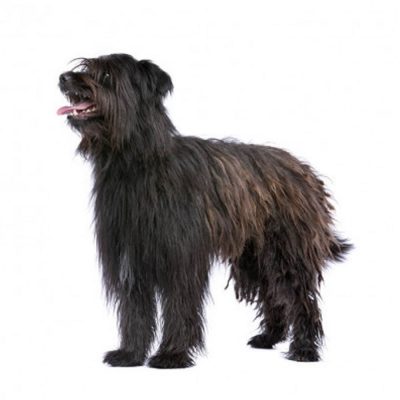Pyrenean Sheepdog Longhaired
Group 5: Working Dogs
Height:
Male: 42 – 48 cm
Female: 40 – 46 cm
Energy Level: Moderate – high
Original Function: Herding
Lifespan: 10 – 14 yrs
Recommended for: Active people, families.
Note: Not many in Australia.

Group 5: Working Dogs
Height:
Male: 42 – 48 cm
Female: 40 – 46 cm
Energy Level: Moderate – high
Original Function: Herding
Lifespan: 10 – 14 yrs
Recommended for: Active people, families.
Note: Not many in Australia.

The Pyrenean Sheepdog breed – or Le Berger des Pyrenees – dates back to at least the 19th century in France. They were used for herding large flocks of sheep in the mountainous region of the Pyrenees and came to the attention of the outside world with the First World War when they were used as a messenger dog by the French army.
They are inquisitive, alert, energetic dog, the Pyrenean Sheepdog has retained strong herding instincts, which will need to be channelled in to work or other jobs for mental stimulation. They are naturally wary of strangers but should be good-tempered with them. Not an ideal breed for a novice handler.
Temperament: It is a courageous, resourceful little dog, showing initiative and totally devoted to its master. It is headstrong by nature and firm control is usually needed to channel its energy and bring out its intelligence and liveliness. It is often wary of strangers.
Appearance: A dog displaying a maximum of nervous energy in a minimum of size and weight. An ever alert physiognomy, a knowing air combined with great liveliness of movement give this dog a characteristic appearance unlike any other.
Characteristics: Sporty, active and loyal.
Coat:
Skin: Thin, often marbled with dark patches, irrespective of coat colour.
Coat: Long or semi long, but always dense, almost flat or slightly wavy, thicker and woollier on the croup and thighs, texture somewhat between goat’s hair and sheep’s wool.
In some dogs the mixture of coarse and woolly hair can produce sorts of strands or cords called” cadenettes” and sometimes matted or felted hair called “matelotes” which overlaps like tiles on the croup. “Cadenettes” can be found on the chest and forelegs at elbow level.
The muzzle has shorter, less dense hair. On the end of the muzzle, and sometimes along the whole muzzle, it is laid flat and set from front to back. On the sides as well as on the cheeks, the hair is longer and brushed up in a windswept way from front to back.
Eyes must be clearly visible and not covered by hair.
Colour: Fawn, lighter or darker, overlaid with black or not and sometimes with a little white on the chest and on the limbs; grey, lighter or darker, often with some white on the head, chest and limbs; blue with black mottling (harlequin or slate blue). There are also brindle, black coats or black with white markings (limited spotting).
Grooming: Fairly low maintenance, needing just an occasional brush every few weeks to prevent the coat from tangling or becoming matted. If the coat is not brushed then it will develop cords similar to that of the Hungarian Puli. Coat sheds lightly, but not excessively.
Exercise: They love learning new things and enjoys working, making them an easy dog to train providing the training methods are right. Quick learners and eager to please, they will thrive with a trainer who is consistent, firm, fair and provides plenty of praise.
Health: Healthy and hardy breed with little known health problems, however epilepsy, patellar luxation and hip dysplasia have all been noted in the breed.